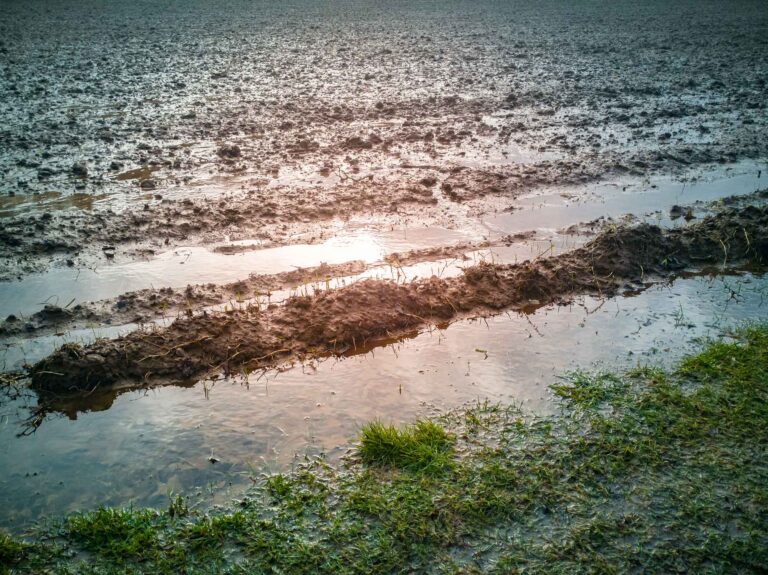Farmers and ranchers impacted by extreme weather events in 2023 and 2024 may now have some access to relief through $16 billion specifically allotted for these needs. The U.S. Department of Agriculture will begin accepting applications for disaster assistance on July 10 through local Farm Service Agency offices.
The rollout includes multiple relief programs funded by over $30 billion secured through the American Relief Act of 2025.
U.S. Senate Agriculture Committee Chairman John Boozman (R-Ark.), who played a central role in securing the funding, welcomed the announcement.
“Farmers and ranchers in Arkansas and the across country have faced relentless challenges in recent years including severe weather and natural disasters,” Boozman said. “This assistance is a critical step to help producers recover and continue feeding and fueling the world.
“America’s producers are resilient, but the scale of recent natural disasters has been devastating to farm families. This assistance will go a long way in ensuring our agriculture industry remains strong. I appreciate USDA’s work to get these resources out the door quickly and efficiently.”
The USDA’s Supplemental Disaster Relief Program is made up of several major components, each targeting different types of agricultural losses. Key programs include:
- Emergency Commodity Assistance Program: Supports producers facing economic loss from 2024 planted and prevented planted acres. Sign-up began March 19 and will end August 15, 2025. Nearly $8 billion in payments have already been issued.
- Emergency Livestock Relief Program: Offers aid for livestock losses due to drought, wildfire, and flooding in 2023 and 2024. Drought and wildfire payments began in late May. Flood-related sign-up is expected to begin August 18, pending software updates and OMB clearance.
- Supplemental Disaster Relief Program: Provides support for revenue, quality, or production losses caused by weather events. Producers with indemnified losses began signing up the week of July 7. Those with shallow or uncovered losses will begin applying on September 15, following final rule approval.
- Block Grants: USDA is also working with states to finalize general and regional block grants. These grants are specifically structured to avoid duplication of other USDA payments and will address regional crop, timber, and livestock losses, especially in New England and Pacific states like Alaska, Vermont, and Hawaii.
Direct assistance for producers
To simplify the process, pre-filled applications have been mailed directly to eligible producers. Those who believe they may qualify but did not receive a form are encouraged to contact their local FSA office immediately.
In addition to government officials, commodity groups are praising the move. Pat Clements, President of the National Association of Wheat Growers, said the program will provide essential support to growers nationwide.
“Wheat growers have faced numerous challenges over the past year, including extreme weather,” said Clements. “These funds will help producers recover and continue their critical work of feeding and fueling the world. NAWG appreciates USDA’s commitment to delivering this much-needed assistance in a timely manner.”
State leaders also praised USDA’s approach, noting the importance of timely support. Texas Agriculture Commissioner Sid Miller emphasized both the urgency and effectiveness of the rollout:
“I praise USDA Secretary Brooke Rollins for her continued efforts to deliver much-needed relief to America’s farmers and ranchers through the congressionally authorized $16 billion Supplemental Disaster Relief Program,” Miller said. “This streamlined initiative, featuring pre-filled applications and immediate in-person support, is exactly what producers require after facing devastating droughts, wildfires, floods, and freezes over the past couple of years.
“Texas is no stranger to natural disasters, ranking first in both the number and cost of severe weather events each year. Unlike delays seen in the past under previous administrations, this rapid response demonstrates a genuine and ongoing commitment to rural America by the Trump administration. This is a helping hand, not a handout, and the strength of our food supply depends on it.”
In recent years, farmers and ranchers have dealt with drought, wildfires, flooding, hurricanes, and other weather extremes that have affected production, destroyed infrastructure, and strained mental and financial health.
While disaster relief programs are not new, this year’s initiative includes enhanced tracking tools and digital dashboards for transparency. The ECAP Dashboard, for example, provides real-time payment tracking, and USDA continues to expand communication efforts to ensure all eligible producers are informed and equipped to apply.
For more information about individual program components and application deadlines, visit the USDA’s Supplemental Disaster Relief Program page or contact your local FSA office.


:max_bytes(150000):strip_icc()/PTxFarmEngageFMIS-65678ee698454c5cbf7132c9b4183095.jpg)
:max_bytes(150000):strip_icc()/10621136395_38f39e393d_o-5840150322224f2eb93650c06d73333f.jpeg)
:max_bytes(150000):strip_icc()/GEHL_VT360_CTL_Truck_Loading-c651d633ed2147ff8d2fe08d2c1fc468.jpg)






:max_bytes(150000):strip_icc()/Markets-6-Corn-down-12-99d8f1c9a5524e4587717165da085146.jpeg)